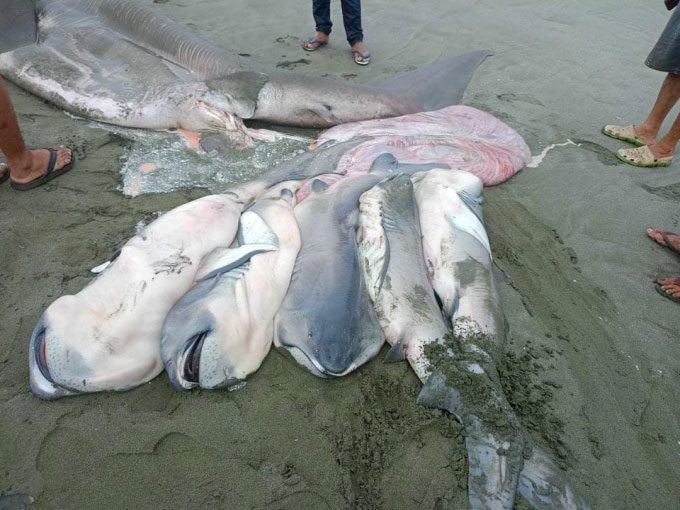Scientists have encountered a pregnant Megachasma pelagios (large mouth shark) for the first time, washed ashore at Barangay Ipil, Dipaculao Aurora, Philippines.
This new discovery confirms that the large mouth shark is an ovoviviparous species: the eggs develop inside the mother’s body, and she gives birth to live young, reported Forbes on December 3.

Adult large mouth shark (in the back) and young. (Photo: Joan Edillo/Annabelle Lapitn)
The large mouth shark was first discovered in 1976. This is considered one of the most impressive discoveries of a new shark species in the late 20th century, according to Dr. David Ebert, a ichthyologist at the Pacific Shark Research Center. To date, less than 120 individuals have been observed or photographed, and many mysteries remain about this deep-sea creature.
The large mouth shark is characterized by its rounded snout, wide mouth, and bulging head. They move slowly and are not aggressive, feeding on small plankton while swimming. Scientists rarely encounter the large mouth shark because they prefer to operate in deep, remote waters, often moving slowly and alone.
Therefore, the new discovery on the shores of the Philippines is extremely valuable to scientists. The animal measured over 5 meters in length, approximately 1 meter in width, and is estimated to weigh 400 kg while preparing to give birth. Each young shark is about 1.7 meters long, 0.3 meters wide, and weighs 40 kg.
“The new discovery of the pregnant female provides useful information about the mysterious large mouth shark species. This first case of a pregnant female will help answer questions such as how many young are born each time, how large the mature female sharks grow, and where they will reproduce,” Ebert said.


















































